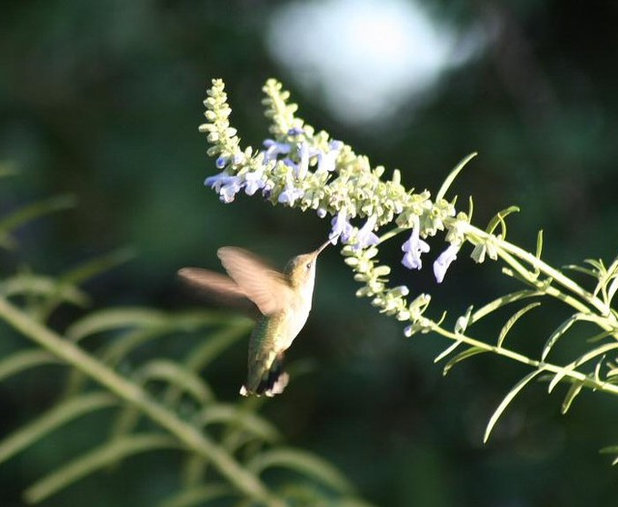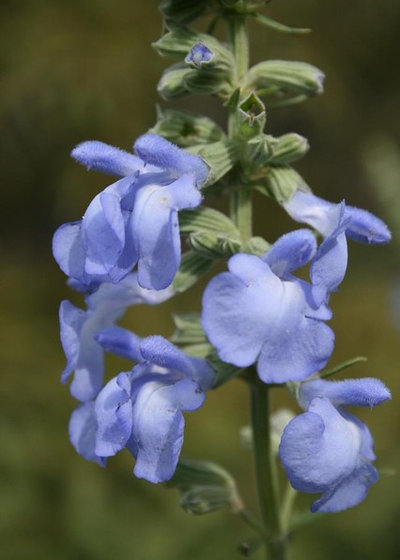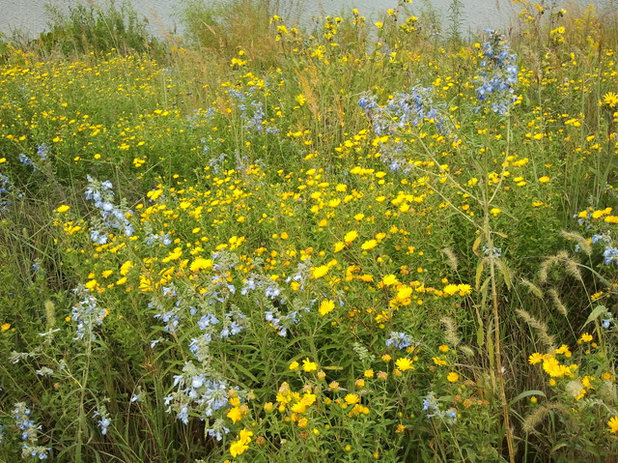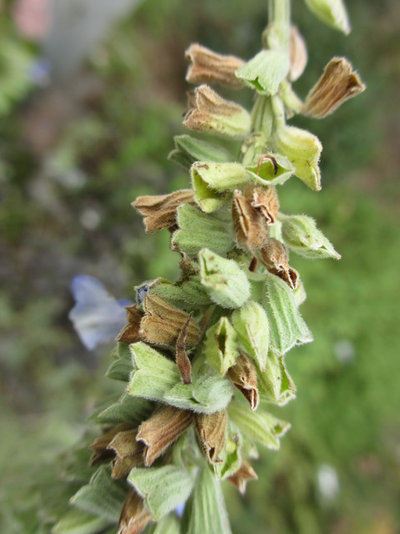There's plenty going on in the fall if you have some blue sage. Bumblebees are dangling from its tubular blooms as hummingbirds fuel up on their migration south, and the aromatic scent of the plant's leaves is spicing up the deep autumn musks.

Benjamin Vogt / Monarch Gardens
Common names: Blue sage, pitcher sage, sage
Botanical name: Salvia azureaUSDA zones: 4 to 9 (find your zone)
Water requirement: Tolerates drought; prefers regular water in well-drained clay, sandy or rocky soils
Light requirement: Full sun to some shade
Mature size: 3 to 4 feet tall and 1 to 2 feet wide
Benefits and tolerances: Attracts beneficial insects; easy to grow on your own from seeds; deer resistant
Seasonal interest: Early to midfall blooms; spent flower heads provide winter interest.
When to plant: Early spring to late fall; mulch well in late fall to prevent frost heave.

Benjamin Vogt / Monarch Gardens
Distinguishing traits. Blue sage is a true blue flower, which is rare in the plant world, especially for a noncultivar. It grows well in full sun and medium to dry soils, never putting up a fuss. It very slowly spreads to form a clump 1 to 2 feet in diameter with many flower stalks.
Salvia azurea 'Nekan' is a hardy, bigger-bloomed sport found in northern Lincoln, Nebraska.

Powell Gardens, Kansas City's Botanical Garden
How to use it. Blue sage can go almost anywhere due to its small footprint. Tuck it among grasses or mounding perennials, and let it tower above them in late fall, adding dramatic yet subtle interest to an October garden.
Shown with golden aster

Benjamin Vogt / Monarch Gardens
Planting notes. Salvia azurea will gently self-sow, but what's even more fun is to gather its small seeds and sow them yourself indoors over winter. You'll know when to gather seeds by the brown color of the outer pod (as seen here).
The seeds easily germinate without any treatment, and the leaves are an aromatic delight in cold January as you get a head start for spring planting. Cut it back 50 percent just once before July 4 for a bushier and shorter habit, or leave it alone for the tall spikes that hummingbirds prefer.





